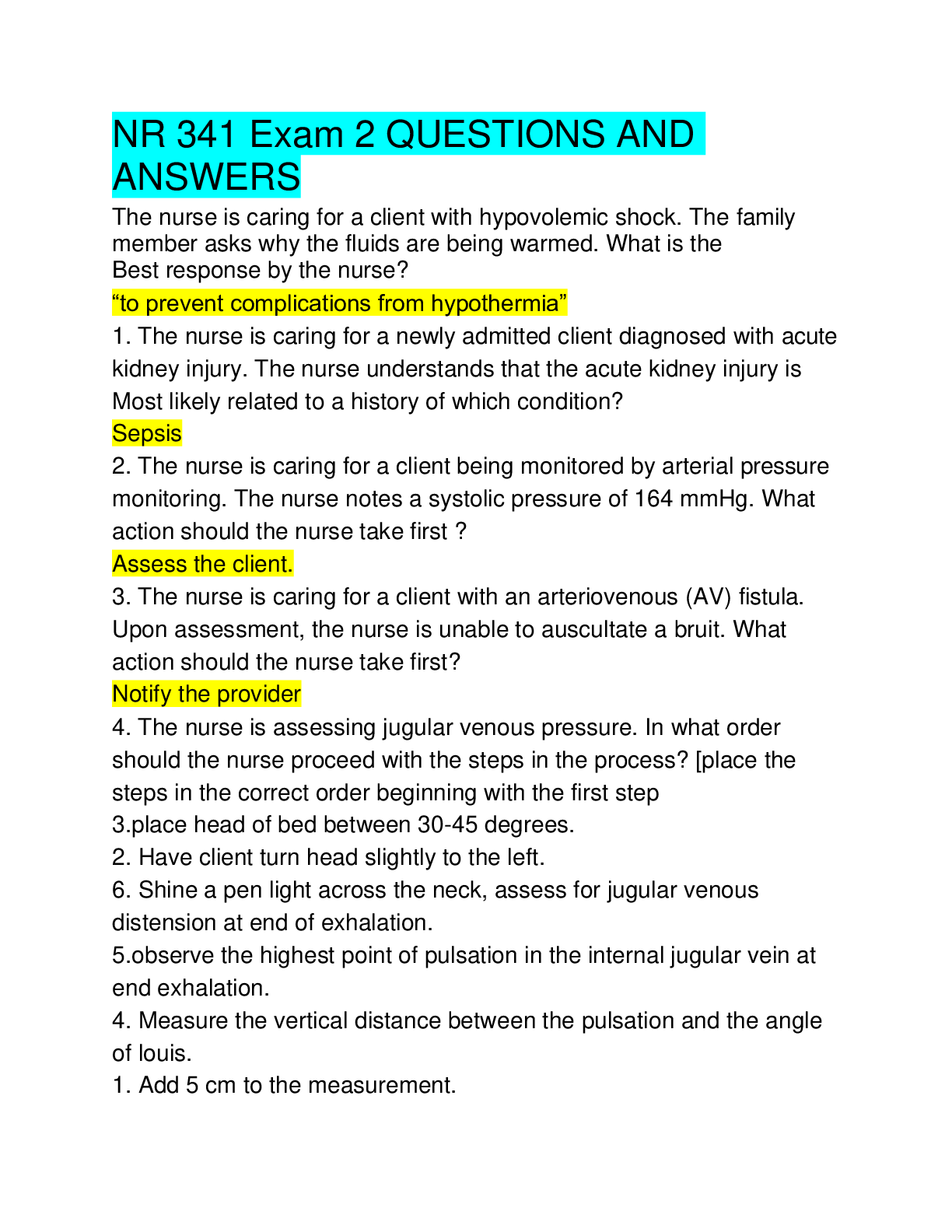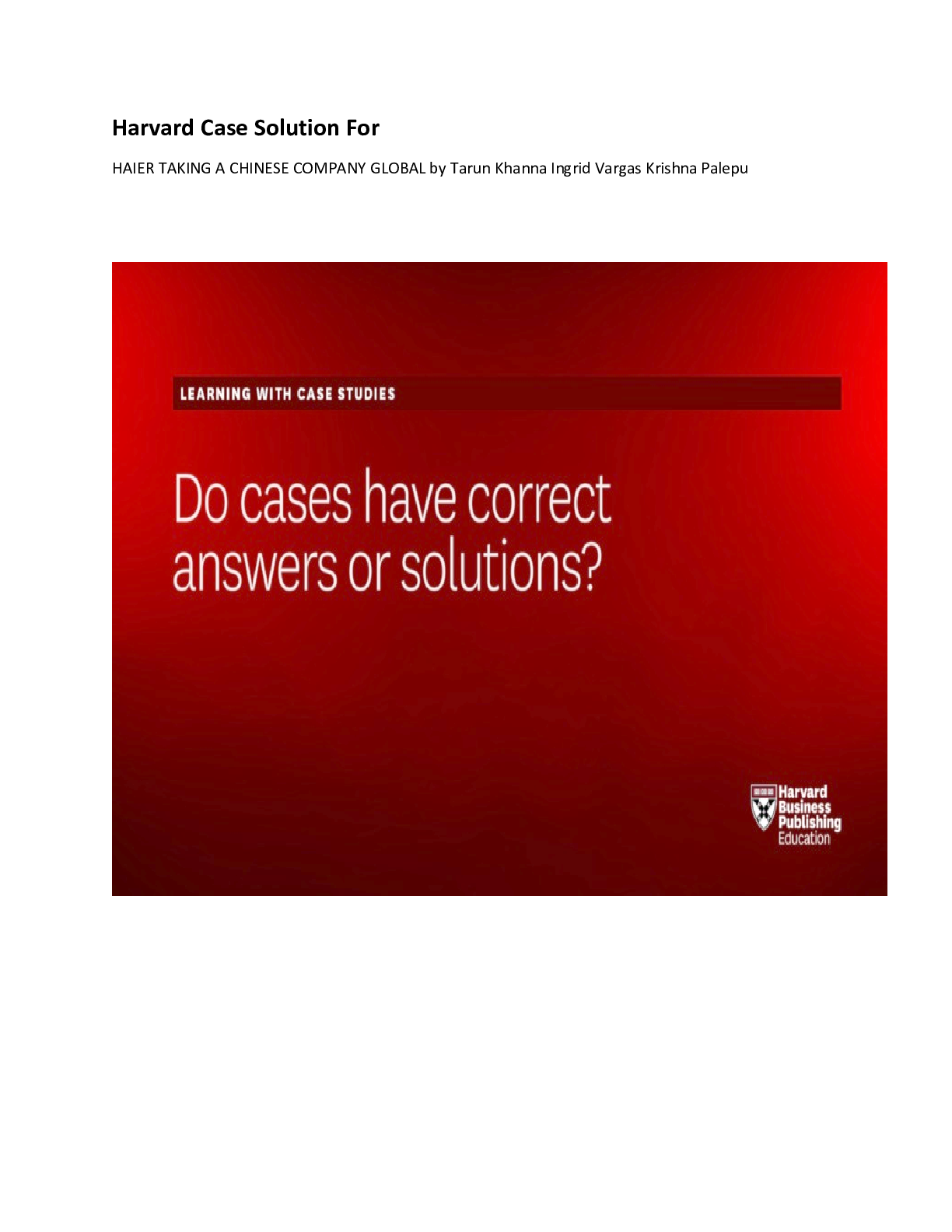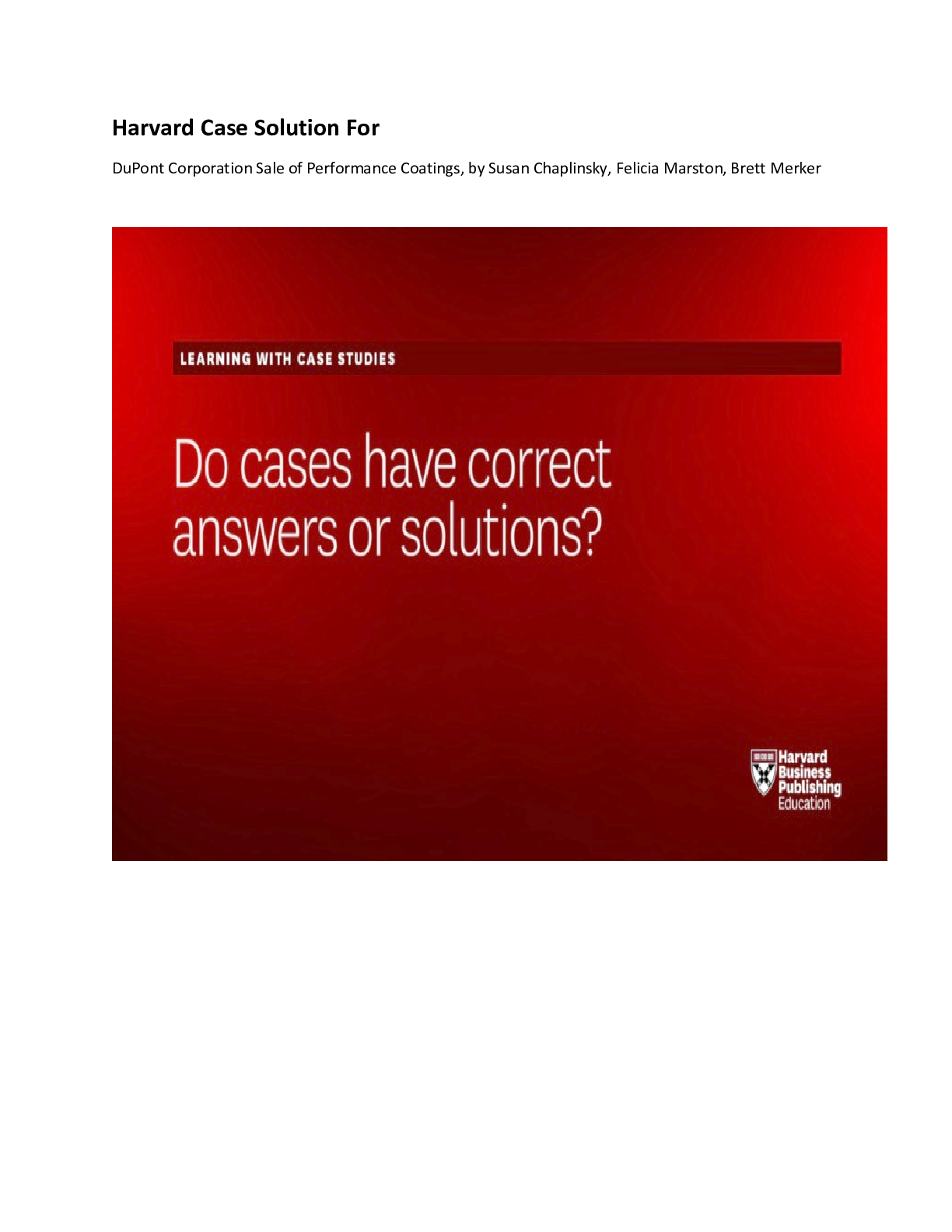Financial Accounting > EXAM > 4 SETS ACCT505 MIDTERM EXAM | ALL WITH CORRECT ANSWERS (All)
4 SETS ACCT505 MIDTERM EXAM | ALL WITH CORRECT ANSWERS
Document Content and Description Below
4 SETS ACCT505 MIDTERM EXAM ALL AC505 Week 4 Midterm SET 1 QUESTION 1: Wages paid to a timekeeper in a factory are a: • Prime Cost YES.....Conversion Cost NO • Prime Cost YES.....Conve... rsion Cost YES • Prime Cost NO....Conversion Cost NO • Prime Cost NO.....Conversion Cost YES QUESTION 2: A cost incurred in the past that is not relevant to any current decision is classified as a(n): • period cost. • opportunity cost. • sunk cost. • differential cost. QUESTION 3: Inventoriable costs are also known as: • variable costs • conversion costs • product costs • fixed costs QUESTION 4: When the activity level is expected to decline within the relevant range, what effects would be anticipated with respect to each of the following? • Fixed Costs per Unit Increase and Variable Costs per Unit Increase • Fixed Costs per Unit Increase and Variable Costs per Unit do not change • Fixed Costs per Unit do not change and Variable Costs per Unit do not change • Fixed Costs per Unit do not change and Variable Costs per Unit Increase QUESTION 5: When manufacturing overhead is applied to production, it is added to: • the Cost of Goods Sold account • the Raw Materials account • the Work in Process account • the Finished Goods inventory account QUESTION 6: Which of the following statements about process costing system is incorrect? • In a process costing system, each processing department has a work in process account • In a process costing system, equivalent units are separately computed for materials and for conversion costs • In a process costing system, overhead can be under- or overapplied just as in job-order costing • In a process costing system, materials costs are traced to units of products QUESTION 7: The weighted-average method of process costing differs from the FIFO method of process costing in that the weighted-average method: • can be used under any cost flow assumption • does not require the use of predetermined overhead rates • keeps costs in the beginning inventory separate from current period costs • does not consider the degree of completion of units in the beginning work in process inventory when computing equivalent units of production QUESTION 8: The contribution margin ratio always increases when the: • break-even point increases • break-even point decreases • variable expenses as a percentage of net sales decreases • variable expenses as a percentage of net sales increases QUESTION 9: Which of the following would not affect the break-even point? • total variable expenses • selling price per unit • variable expenses per unit • total fixed expenses QUESTION 10: Under variable costing: • net operating income will tend to move up and down in response to changes in levels of production • inventory costs will be lower than under absorption costing • net operating income will tend to vary inversely with production changes • net operating income will always be higher than under absorption costing QUESTION 11: The following data (in thousands of dollars) have been taken from the accounting records of Larder Corporation for the just completed year. Sales ........................................................................... $950 Purchases of raw materials ........................................ $170 Direct labor ................................................................ $210 Manufacturing overhead ............................................ $200 Administrative expenses ............................................ $180 Selling expenses ......................................................... $140 Raw materials inventory, beginning .......................... $70 Raw materials inventory, ending ............................... $80 Work in process inventory, beginning ....................... $30 Work in process inventory, ending ............................ $20 Finished goods inventory, beginning ......................... $100 Finished goods inventory, ending .............................. $70 Required: a. Prepare a Schedule of Cost of Goods Manufactured in good form. b. Compute the Cost of Goods Sold. c. Using data from your answers above as needed, prepare an Income Statement in good form Level: Medium LO: 1,3,4 [Show More]
Last updated: 2 years ago
Preview 1 out of 24 pages

Buy this document to get the full access instantly
Instant Download Access after purchase
Buy NowInstant download
We Accept:

Reviews( 0 )
$13.00
Can't find what you want? Try our AI powered Search
Document information
Connected school, study & course
About the document
Uploaded On
Feb 17, 2021
Number of pages
24
Written in
Additional information
This document has been written for:
Uploaded
Feb 17, 2021
Downloads
0
Views
128














